#bob pettitt
Text
Early background art for squidbillies, done by ATHF bg artist regular, Bob Pettit


28 notes
·
View notes
Text
TW// fake, cartoon bl//d, realistic v//ns, br//s/s, missing b//dy parts, gore
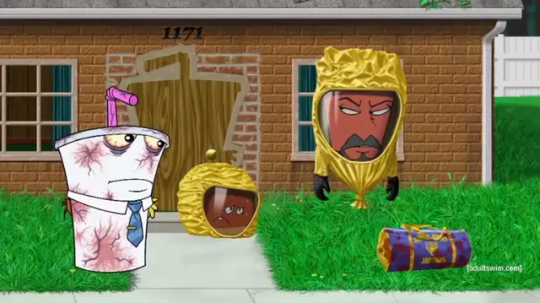
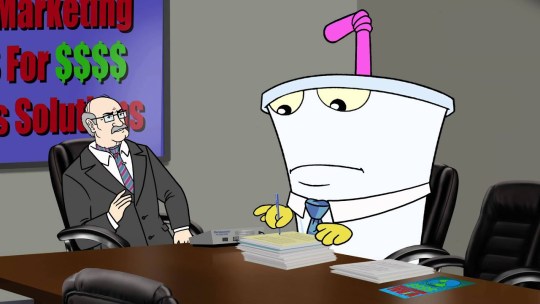

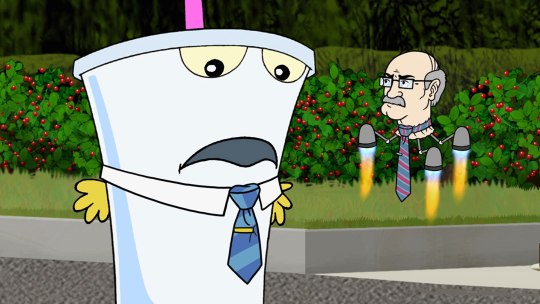
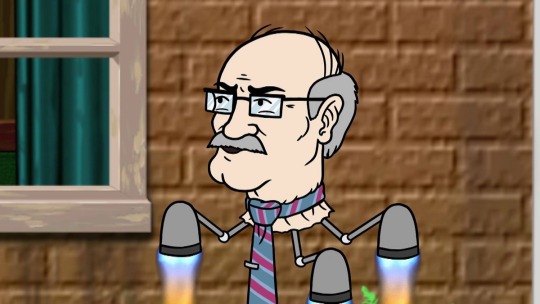


on october 13th, 2013, the “aqua tv show show” episode, “piranha germs”, first aired on [adult swim]
guest stars brian stack as don and rob poynter
production art from bob pettitt

#atvss#aqua tv show show#master shake#meatwad#frylock#don#piranha germs#piranha germs ep#piranha germs episode#season 10#bob pettitt
9 notes
·
View notes
Video
vimeo
hsi.org/SaveRalph SAVE RALPH Written & Directed By SPENCER SUSSER Produced By SPENCER SUSSER JEFF VESPA LISA ARIANNA Cast TAIKA WAITITI RICKY GERVAIS ZAC EFRON OLIVIA MUNN POM KLEMENTIEFF TRICIA HELFER LIV TENNET Cinematographer Tristan Oliver BSC Editor Spencer Susser MODEL BUILD AND SHOOT ANDY GENT, ARCH MODEL AND FILM STUDIOS MODEL SHOOT ARCH FILM STUDIO Stop Motion Producer Lisa Hill Animation Director and Animator Tobias Fouracre Camera Operator Mark Swaffield VFX Supervisor Neil Riley Motion Control Stuart Galloway Justin Pentecost MODEL MAKING ARCH MODEL STUDIO Art Direction Andy Gent Modellers Christy Matta Stefano Cordioli Jade Gerrard Sofia Serrano Marina Ralph Andrew Saunders Kat Probert Patrycja Cichocka Angela Quartaroli Josie Corben Angela Pang Ofelya Ka Roddy Mcdonald Mick Chippington Mark Fisher Mitch Barnes Gary Welch Molly Cooper Florence Ford Roy Bell Elizabeth Riley Claudia Brugnaletti Executive Producer PETER KLINE - DONNA GADOMSKI - TROY SEIDLE Policy Advisor AVIVA VETTER Re-Recording Mixer…… Robert Mackenzie Sound Editor…… James Ashton Sound Assistant…… Jessica Meir Additional Dialogue …… Christopher Weekes VFX & Online…… Siamese Siamese Executive Producer…… Francesca Hope Post Co-ordinators…… Dana Harrold Ainsley Pettitt VFX Technical Director & Lead Artist - Andrew Buckley VFX Artists - Kristen King - Antony Webb Color - Tim Stipan, Company3 Behind The Scenes Fuschia Kate Sumner - Ross Metcalf - Thomas Lee - Gary Blake Special Thanks Vanessa Buckley - Michael Gracey - Bob Wallerstein - Matthew Wallerstein - alldayeveryday - Jamie Hilton - Jessie Hilton - Howard Cearns - Emma Cearns - Jeffrey Flocken - Kim Davis-Wagner & Justine Arteta - Anna Frostic - Tom O’Connell Ohad Rein - Denson Baker - Grant Sputore - Nash Edgerton - Company 3
5 notes
·
View notes
Photo

Los Dominicanos Alex Rodríguez y David Ortíz encabezan la lista de candidatos al Salón de la Fama de MLB de la clase 2022. Además de los dos dominicanos, aparecerán en las boletas: Prince Fielder, Tim Lincecum, Justin Morneau, Joe Nathan, Jake Peavy, Jimmy Rollins, Mark Teixeira, Michael Bourn, Marlon Byrd, Billy Butler, Carl Crawford, Coco Crisp, Jeff Francoeur, Ryan Howard, Omar Infante, Angel Pagan, A.J. Pierzynski y Juan Uribe. De igual modo se espera que: Scott Kazmir, Colby Lewis, Kyle Lohse, Javier López, Jonathan Papelbon, Matt Thornton y Ryan Vogelsong hagan su primera aparición. A pesar del gran talento que hubo en las boletas para la clase 2021, el comité del Salón de la Fama, ningún miembro logró el 75% necesario para ser exaltado. Curt Schilling, Barry Bonds, Roger Clemens, Scott Rolen, Billy Wagner, Todd Helton, Andruw Jones, Gary Sheffield, Omar Vizquel, Jeff Kent y Manny Ramirez volverán a participar luego de haber conseguido el porcentaje mínimo para mantenerse. Además de Sammy Sosa, Andy Pettitte, Mark Buehrle, Torii Hunter, Bob Abreu y Tim Hudson.. . . . . . . . . .#osnyenlosdeportes #beisbollatinord #loquepasohoy #dominicanosmlb #peloterosdominicanos .#mlb #alexrodriguez #Davidortiz #pelotacaliente #pelotadominicana #rd🇩🇴 #rd #juansoto #lidomrd #grandesligas #mlb #mlbdominicana https://www.instagram.com/p/CKmnQ92jpkV/?igshid=130caiwgjq79d
#osnyenlosdeportes#beisbollatinord#loquepasohoy#dominicanosmlb#peloterosdominicanos#mlb#alexrodriguez#davidortiz#pelotacaliente#pelotadominicana#rd🇩🇴#rd#juansoto#lidomrd#grandesligas#mlbdominicana
0 notes
Text
My firsts New York Yankee Autograph
So, as I’ve mentioned before, I am a huge Yankees fan. That being said, I obviously want to land some Yankees autograph’s. Or at least some relic cards, right. Well, luckily, I didn’t have to wait too long for it to happen.
I was still pretty new to this whole collecting thing. I had gone into Bob’s store and to be honest, I don’t remember if I was there for something specific, or if I was just there to spend money on something. Anyway, this one guy had walked into the shop after me, and started talking to Bob about the Topps Tribute boxes that he had on the shelf. This was where I was first exposed to the high end side of baseball cards. Bob told the guy that he has seen some great boxes and some not so great boxes. Either way the design was beautiful but the price was hefty, close to $300 per box if I remember correctly. The guy picked up the box and also an autographed photo of Mickey Mantle (yeah, the Mickey freaking Mantle!!!). God knows how much that guys actually spent that day.
Once the guys left, I started asking Bob about the Tribute cards. That where he explained to me that it was one of the high end products. The box had 6 packs each with 3 cards, and you’re guaranteed and autograph or relic card in each pack, hence the hefty price tag. He had an open box and was also selling individual packs as well for $48. After a little inner deliberation I was like, ‘why not’, so I bought one. To my disappointment I got a relic card, a Hanley Ramirez jersey numbered to 299. It was almost insulting that I pulled a Red Sox player for that much money on 3 cards. So, me being the impulse buyer I am
said ‘Bob, let me have another pack’. This time I was much more satisfied.

2017 Topps Tribute Andy Pettitte Tribute Autographs Blue Parrallel
An Andy Pettitte on card autograph numbered 07/75. Now, it’s not exactly a high dollar card. Look it up on ebay and most auctions probably wont go beyond $40. But to us Yankees fans, hes a legend. Most Postseason wins of all time, won every clinching game during the 2009 championship run and was always a likeable guy. He will always be a fan favorite and a member of the Core Four that helped win 4 championships in 5 years at the turn of the century. Needless to say, this pretty much made my day, the $96 that I spent on 6 cards notwithstanding.
1 note
·
View note
Text



Some storyboards from 2007’s Aqua Teen Hunger Force Colon Movie Film For Theaters drawn by Bob Pettitt. It’s from the scene in which frylock explains the true origins of the titular duo
#animation#production art#storyboard#aqua teen hunger force#aqua teen hunger force colon movie film for theaters#master shake#meatwad#frylock#creation#2007#2000’s#adult swim#radical axis#big deal cartoons#matthew i jenkins studio
117 notes
·
View notes
Text



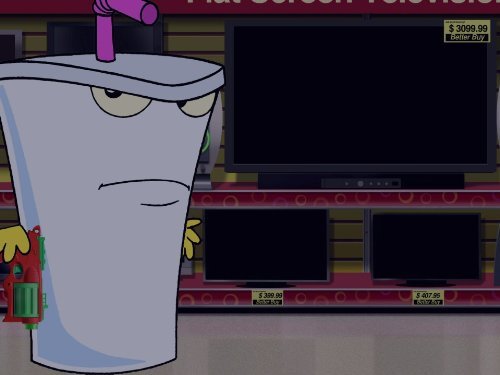

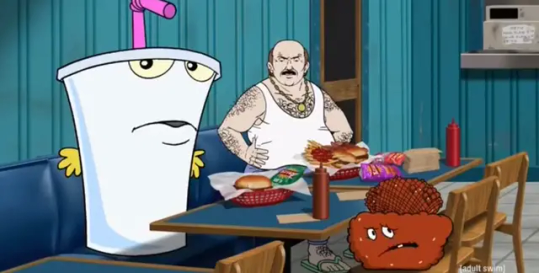

on september 15th, 2013, the “aqua tv show show” episode, “working stiffs”, first aired on [adult swim]
the episode guest starred dana swanson, wendy cross, and jim florentine, as the manager who is interviewing frylock
production art from bob pettitt:
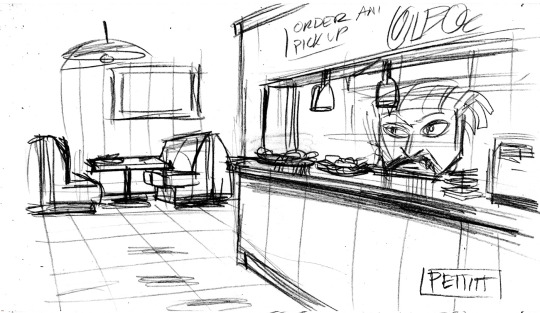

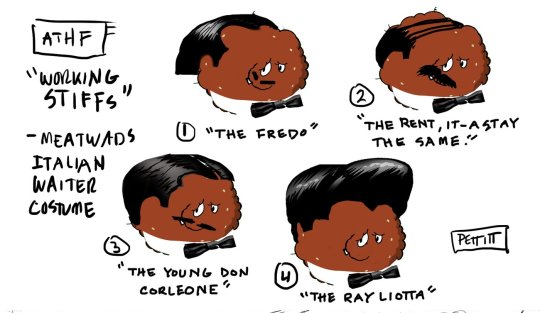

#this is probably one of my fav eps#idk why my brain just liked it a lot lol#atvss#aqua tv show show#master shake#meatwad#frylock#carl brutananadilewski#working stiffs#working stiffs ep#working stiffs episode#season 10#bob pettitt#i feel like this ep is so underrated#ik i say that abt a lot of the eps-#but this season in particular just feels slept on imho#also can someone please lmk when these eps have an anniversary???? /rh /nm#i always keep posting late wth#ALSO AGAIN-#I LOVE HOW MY BOI DANTE MADE A CAMEO AGAIN#LOVE DANTE 😍😍😍#we stan dante in this house#🫡🫡🫡#he is literally my fav side/one off character lol#oh and credit to bob pettitt for the last pics since they are obviously not mine and all rights go to him :3
9 notes
·
View notes
Text
The Yankees-Red Sox rivalry went from hatred to RE2PECT and back

The Yankees and Red Sox went to some dark, hateful places. Then the rivalry went to some darker, RE2PECTful places.
Before the Yankees and Red Sox brawled on the field at Fenway in their first series this season, it had been a long time since the rivalry had seen a moment that heated. By the 2013 season, the Red Sox-Yankees rivalry had lost the majority of its oomph. The Red Sox were pitiful in 2012 and New York’s victorious 2009 team had aged into a group either already enjoying retirement or privately contemplating how much longer they could stave off the inevitable.
Fans of both teams fell into a resting heart rate of “we do not like this team” rather than “it feels as though this team murdered my dog and family and I will display my hatred accordingly alongside a stadium of like-minded people.” Players from the the rivalry’s most recent peak in the aughts — the Papis and the Jeters and the Riveras of it all — seemed to feel the same about where the rivalry stood. The constant vitriol between players petered out for no other reason than that the passage of time comes for every rivalry eventually. The fire was gone.
One of the most storied rivalries in the sport going from 100 to 0 in only a few seasons would have seemed unlikely at the turn of the decade. Especially to those who weren’t old enough to remember the last lull in the rivalry in the early- to mid-90s. The 2000’s were full of resentment and anger and players throwing 72-year-old men to the ground.
You remember all those big moments. There was Aaron Boone’s home run, the Pedro Martinez-Don Zimmer fight, the Varitek vs. A-Rod fight, the 2004 ALCS comeback, multiple championships for the Yankees sandwiching multiple championships for the Red Sox. The smaller moments all meant something too — buying a Yankee Hater hat (which were an absurd design at the time and should be remembered that way), going to the opposing team’s stadium and starting something in the bleachers (intentional or … yeah it was usually intentional), walking past a fan of the other team on a normal day in a random setting except that both of you are wearing your chosen hats and you throw side eye so emphatically it’s as if Andy Pettitte cutter’s came to life as a stare.
It all added up to a level of nativism and tribalism that seemed hard to break free from overnight.
In the summer of 2009 I lost my grandmother, a through-and-through New Jersey Italian who loved few things in the world more than Bob Barker and Derek Jeter. Growing up a Boston fan made it difficult to see eye-to-eye with her about The Captain or anybody else who happened to be clean-shaven and wearing pinstripes. But we had fun with it every year, rooting against each other and bonding.
As the Yankees progressed further into the postseason that year, there was a push from my family to root for them on behalf of Gram, that it would mean more if they won for her. After the Yankees won the Series I could admit that it felt like a cosmically well-timed gesture from her favorite team, but at no point during the playoffs could I bring myself to root for them on her behalf. The built-in animosity was that strong. I still think she would appreciate my commitment.
The dissipation of that animosity didn’t feel as abrupt as it now seems looking back, but as the decade flipped over so did the relationship between these two teams. The usual instigators mellowed out, and both teams took turns being far better than the other several seasons in a row.
Those 2011, 2012, and 2013 seasons were the nadir of the rivalry. In 2011 the Red Sox had the most drastic September collapse in baseball history, fired their manager, smeared that once-beloved manager in the press with rumors of a prescription painkiller addiction, and then spent most of the offseason unpacking what the hell just happened. When one attempted defense is that players only drank beer in the clubhouse but not the dugout during games you know things are a true mess.
For most of the rivalry’s history things were decidedly lopsided and there still managed to be some heat. It turns out one team being so pathetic as to have an entire season dubbed the “fried chicken and beer season” that led to a disgraceful collapse is the line too sad to cross for the sake of rivalry fun.
2012 saw Boston finishing last in the AL East while the Yankees finished first. The next year they swapped, with Boston in first and New York in fourth, with that 2013 New York team the first Yankees squad to miss the playoffs since 2008.
They were so disappointing that when they were finally mathematically eliminated from the postseason the New York Post’s lede was “The Yankees finally were put out of their misery Wednesday night.” Which provokes imagery closer to that of a wounded animal finally being put down than a team missing the playoffs for only the second time in 19 years.
How do you put any energy into mocking your arch rival when that rival is so down and out that you’d actually feel bad lobbing insults? Or when they’re playing for something bigger than the game and it would feel wrong to engage in the normal ribbing? They weren’t even in each other’s orbits competition-wise in those years, and on top of that the old guard was giving its last gasps.
The players on the 2009 rosters were scattered by 2013. Jeter was recovering from his ankle injury, a year away from retiring. Jacoby Ellsbury was a year away from switching to pinstripes. A-Rod was as enjoyably petulant as ever, but a year out from being suspended for a full season, with his once-sparring partner Jason Varitek already having retired the season before. Andy Pettitte retired with Varitek, and a long procession of Mariano Rivera retirement ceremonies took place the next year. Former Red Sox third baseman Kevin Youkilis publically squashed his years-long feud with Yankees pitcher Joba Chamberlain before signing with New York that year, then played 28 games in pinstripes and retired. Even the human fireworks accident known as Jonathan Papelbon was out of Boston.
Watching both sides give lavish retirement gifts to their supposed enemies was the ultimate tip-off that the rivalry wasn’t what it once was.
Derek Jeter played the final game of his career at Fenway against a last-place, prospect-filled Red Sox team. Boston presented him with a piece of the Green Monster, spelled out “WITH RESPECT 2 DEREK JETER” on the scoreboard, and even gave him a pair of Yankees-themed L.L. Bean boots. Legendary Boston athletes from all sports bid his career adieu and the entire team signed a piece of the Green Monster that had “RE2PECT” printed on it. Any one of those things would have made a 2008 fan wretch, all three together would have been practically sacrilegious if you time traveled and tried to explain it to them.
But by 2014 it felt … fine. Two seasons after Jeter’s ceremony at Fenway the Yankees gave David Ortiz a book of letters and a painting of him in Yankee Stadium, personally presented by Mariano Rivera. It was a lovely moment. Rivera’s gifts included his number 42 from the Fenway scoreboard and the visiting bullpen’s pitching rubber as tribute. During that ceremony, the Red Sox also lightly roasted him by including a video looking back at his performance in the 2004 ALCS, when Rivera infamously blew the Game 4 save in the 9th inning to let the Red Sox back into the series — but the video felt like cheeky fun, not out-and-out nasty. (Not every New York fan saw it that way.)
During Rivera’s retirement fete, he once again noted that the rivalry was always more for the fans than the players, and that makes sense. However being “for the fans” doesn’t mean the rivalry didn’t mean anything. Sometimes it was all in good fun, sometimes it got more serious than it should, but it always made things more interesting and elevated what would otherwise be a routine April or May series to something filled with tension and possibility.
As the Yankees-Red Sox rivalry died down, the rivalry between Boston and Tampa Bay crescendoed. Boston’s other AL East rival had been a needle in its side since the turn of the millennium, but always in second place to the more ardent rivalry in the Northeast. If rivalries are for the fans then the Rays gave the fans what they wanted. Where Pedro Martinez and Jason Varitek and Manny Ramirez were the leaders in inciting animosity in the past, this rivalry belonged to Dustin Pedroia and Luke Scott and David Ortiz and future Red Sox pitcher, David Price.
It wasn’t built to last forever, but the Rays stepped in for a while and provided a healthy dose of brawls and public sniping. Once their window closed and they stopped contending (“future Red Sox pitcher David Price” is only one example of the Rays’ top players leaving town) that rivalry turned back into a pumpkin. And of course the Yankees had the Orioles to mess with, another lower key rivalry that still has heat to it.
So it’s not like either team was suddenly above torturing another team or being pestered by their success. They just didn’t do so against each other for a few years.
The rivalry the fans love best returned partially because of an influx of fresh blood, but also because fierce dislike is a cyclical beast. And the break actually did the rivalry some good.
Today, both teams have young, fun players with overactive bats who aren’t afraid to chirp and fight if the situation calls for it. The “Red Sox as underdogs, Yankees as ravaging conquerors” storyline has played out, setting a new stage for fresh personal vendettas. Neither team has won anything since 2013, so everyone is hungry and it’s a true chase again.
The Baby Bombers versus The Artist Formerly Known As Win Dance Repeat pays homage to their previous rivalry peaks. Boston still has a little of the old scrappy, come-from-behind mentality against the machine-like brutality of the New York offense, but they’re both now operating at the same level of financial abandon. There’s no throwing stones at New York being able to afford Giancarlo Stanton when you live in a glass house made of J.D. Martinez’s signing.
Even managers Alex Cora and Aaron Boone are getting in on the action — with a little in-game shouting and some “we did nothing wrong” interviews — having both witnessed things firsthand in the mid-aughts trenches and seen how much fun a full-bore rivalry can be.
That last “rivalry era” lasted for more than a decade and this could be the start of another glorious stretch of the Yankees and Red Sox engaging in fisticuffs once or twice a year before meeting in the postseason, especially considering all of the young players involved who, if we’re lucky, have many years filled with potential pettiness ahead of them.
It might be greedy to ask for all that from a rivalry that is only just being resuscitated, but that just shows how exciting these teams are right now and how high this rivalry was at its peaks. Not having this feeling for the foreseeable future would be unacceptable. We lived through the lull. It was only natural that it occurred in the long run, but it was a lull nonetheless.
With any luck, this stretch of the rivalry will be just as intoxicating as the last.
0 notes
Text
Los Yankees de 1927, 1939 y 1998 ¿Cuál es el mejor equipo de los Yankees en la historia?
Los Yankees de 1927, 1939 y 1998 ¿Cuál es el mejor equipo de los Yankees en la historia? Por Kevin Mora (@kevinmoraf) #Yankees #BabeRuth #LouGehrig #DiMaggio #MarianoRivera #Jeter
Los Yankees son el equipo más ganador en la historia de las Grandes Ligas con 27 títulos y han tenido épocas dominantes, pero ¿Qué equipo de los Yankees ha sido el mejor?
Comenzamos de atrás hacia adelante y seleccionamos en especifico a 3 conjuntos que marcaron dominio en Grandes Ligas en su momento.
Los Yankees de Nueva York de 1927
Son considerados incluso uno de los mejores equipos de la…
View On WordPress
#Andy Pettite#Andy Pettitte#babe#Babe Ruth#Bernie Williams#Bob Meusel#Bull Dickey#combs#Darryl Strawberry#David Cone#david wells scott brosius#Derek Jeter#DiMaggio#dutch ruether#Earle Combs#El Duque Hernandez#Gehrig#george pipgras#George Selkirk#herb pennock#Jeter#Joe DiMaggio#Joe Gordon#joe maccarthy#Joe Torre#Jorge posada#Lazzeri#Liga Americana#los mejores equipos de la histoia en mlb#los mejores equipos de la historia
0 notes
Video
youtube
Jeter lo hizo todo a su manera
My Way es la biografía musicalizada de Derek Jeter, letra de su autoría y melodía de Frank Sinatra. Nos habla de un hombre que, tras mucho recorrer, se acerca al final del camino, pero se marcha sin arrepentimientos porque vivió una vida plena e hizo lo que tenía que hacer “sin deber nada a nadie”. El número 2 inspiró el tema antes de nacer. Parece que lo compusieron en su honor ese mágico viernes por la noche en Yankee Stadium, cuando con una línea dejó tendidos a los Orioles de Baltimore para despedirse victorioso de su aposento de El Bronx.
Sí, se fue a su manera.
En la homilía final ante su feligresía, Jeter practicó dos de las grandes virtudes por las cuales el beisbol lo canonizará en 2020: responder en la hora cero y servirse de la banda opuesta, don que explotó con maestría desde novato. El cine habría convertido un podrido a la altura del séptimo inning en pletórico misil disparado por el héroe para sentenciar la victoria postrera. No hubo que fabular nada. Jeter lo dispuso así en su testamento. Es que lo dice My Way: “planeé cada trazo de mi curso, cada paso cuidadoso a lo largo del camino. Pero, mucho más que eso, lo hice a mi manera”.
Para coronar la epopeya que superó a la ficción, Jeter pegó hit en el último turno de su existencia y además en Fenway Park, homenajeado por una salva de aplausos que vinieron desde donde más lo odiaban en todo el mundo. Fue Aníbal aclamado en Roma, Jerjes cargado en hombros por las calles de Esparta.
El hombre de My Way tuvo “sus victorias y su cuota de derrotas”, como Jeter. Vaya si ganó. Pegó 3.465 hits para quedar sexto de todos los tiempos en las mayores. Conquistó cinco Series Mundiales, siete campeonatos de liga, 13 banderines divisionales. Atesora el premio al Más Valioso de la Serie Mundial de 2000, el Novato del Año, cinco Guantes de Oro, cinco Bates de Plata, 14 llamados al Juego de Estrellas, nueve de ellos como titular. Dejó promedio vitalicio de .310. Representó a su país en el Clásico Mundial. En los juegos en los cuales participó, los Yanquis tuvieron 511 victorias sobre el punto de equilibrio de .500. En términos puramente individuales, no ha habido pelotero más triunfante que el hombre cuyo número 2 fue retirado la tarde del 14 de mayo de 2017, menos de tres años después de su pase a retiro. “Pensar que hice todo eso. Lo encuentro tan asombroso”, entonan a dúo el cantor y el campocorto.
Y la inmensidad de Jeter no se elabora solo con estadísticas. Fue capaz de derramar sangre por sus Yanquis, y es literal. ¿Recuerdan cuando se empotró en las tribunas y le pegó la cara a las sillas en su afán de atrapar un foul? Solo le importó hacer el out. Y de nuevo la analogía con My Way: “La historia muestra que recibí golpes, y lo hice a mi manera”.
Además, la naturaleza lo dotó de un sexto sentido para el juego, de la intuición de los peloteros únicos ¿O fue iluminación divina su asistencia providencial en la Serie Divisional de 2001 contra Oakland? Y por si fuera poco tuvo la suerte de los campeones, como cuando un fly al right se volvió jonrón por obra y gracia de un niño entrometido que con su guante de fanático le arrebató un out a Tony Tarasco en la Serie de Campeonato de 1996. Ese cuadrangular desvió el curso de la serie, condenó a Baltimore y empujó a Nueva York a su primer clásico de octubre en quince años.
Los Yanquis volvieron a ser los Yanquis con Jeter. Renacieron con Jeter y el resto del Core Four, del que era el último sobreviviente. De ahí el enorme significado de la presencia en su despedida de El Bronx de Mariano Rivera, Andy Pettitte y Jorge Posada. El retiro de Jeter, un Yanqui genésico, salido de las entrañas de la institución, representaba el fin de la última dinastía del club más ganador de las Grandes Ligas. Tal fue su envergadura que se llevó consigo “la voz de Dios”, la de Bob Sheppard, que tronó por última vez desde el más allá poco antes del teatral batazo del veterano de 40 almanaques.
Tan glorioso y a la vez tan accesible. Recuerdo la única vez que lo entrevisté. Fue durante un spring training en el clubhouse del Legends Field, el predio primaveral de los Bombarderos en Tampa, Florida. Cuando me le acerqué temí que dijera que no tenía tiempo, o que lo tenía contado. En cambio respondió con un cordial ¡seguro!”. Pacientemente soportó mis balbuceos en inglés, que le dieron risa, al punto de decir:
“Este chico necesita un traductor”. Contestó, de buena gana, todo lo que le pregunté. Se tomó la licencia de gritarle a Bob Abreu, su compañero de equipo por entonces: “Hey, Bobby, aquí están preguntando por ti”.
En una época cuando el deporte es industria y los atletas productos, Derek Sanderson Jeter, de Pequannock, Nueva Jersey, es el héroe que le devuelve al juego la fibra emocional que le da el ser. Y eso vale mucho. Porque a este negocio lo mueve la pasión de los fanáticos. Sin ilusión, sin corazón, no hay millones. Y Jeter llega al alma de la gente por su carisma y entrega.
¿Derrotas? Tuvo algunas, pero pocas que mencionar, como cuenta un pasaje de My Way. No fue Más Valioso, por ejemplo, ni campeón bate. Sufrió reveses duros, como perder la Serie de Campeonato de 2004 después de irle ganando 3-0 a los Medias Rojas. Pero afrontó todo y se mantuvo de pie como dice la canción, su canción. Dentro de seis años, siempre como en My Way, Derek Jeter expondrá su caso, el cual, estoy seguro, lo llevará a Cooperstown en su primer intento. Y será inmortal, como siempre, a su manera.
Derek Jeter no era, nunca lo fue, el mejor pelotero de todos. Pero su aura, su aire mítico, su respetabilidad, su majestad, hacen de Derek Jeter un embajador del juego, un símbolo, un personaje irremplazable en este momento. Hoy no hay otro como él. Se fue Jeter y cada quien lo recordará… a su manera *
PD: Y hablando de todo, como los locos, ¿Qué actor encarnará a Jeter cuando su vida llegue a la gran pantalla? Pueden dejar aquí sus nombres.
0 notes
Link
On the same day 25 years ago, Greg Maddux threw a 94 pitch complete game shutout in Colorado against the Rockies to lower his ERA to 1.56, while Tony Gwynn had 3 hits in Houston to raise his average to .394 with 45 games remaining. It was August 11, 1994 and the longstanding war between MLB owners and the Players Association would go nuclear very soon, with a players strike starting the next day wiping out the remainder of the 1994 regular season, playoffs, and 252 games the following year. The game once called America’s Pastime was tarnished.
Because it was the players striking for the 5thtime since 1972, much of the blame fell on them in the public narrative, with owners receiving criticism but not nearly as much as the players and Union president Donald Fehr.
The earliest labor disputes in baseball after the formation of the MLBPA in 1966 centered around minimum salaries, arbitration rights, and funding of pensions for retired players, the latter of which was the main issue in the 1972 strike that cancelled 86 games. The nullification of the reserve clause in December 1975 in the Seitz decision led to the advent of free agency, and increasingly hostile labor negotiations.
The next ten years passed with four work stoppages (three strikes and one lockout) mainly relating to free agency compensation rules and salary arbitration rights. The owners sought to impose a free agent system with heavier compensation to drive down salaries while the players fought for a free market approach.
Under the guidance of MLB commissioner Peter Ueberroth for three years starting after the 1985 season, owners refrained from making lucrative offers to free agents from other teams, depressing the market for those players. As an example future Hall of Famer Tim Raines became a free agent after the 1986 season at age 27, but returned to the Montreal Expos on May 1, 1987 after getting no offers as a free agent. The union filed a collusion grievance against the owners each year, and players were eventually awarded $280 million in damages, but any trust that existed between players and ownership evaporated with the rounds of collusion. (Note: Per the collective bargaining agreement, “clubs are not allowed to concert with other clubs and players are not allowed to act in concert with other players”)
Owners forced out commissioner (and ownership critic) Fay Vincent in 1992 and installed Milwaukee Brewers owner Bud Selig as acting commissioner for the coming labor war, one that would see the owners demand a salary cap similar to what the NBA had and what the NFL had implemented in their most recent bargaining talks.
In June, the owners offered a salary cap with a 50/50 split of revenues. But put yourself in the position of the players: why would you trust the owners when they had just been caught cheating your side out of millions of dollars? The players were forced into a strike because they could not have a good faith negotiation given the history involved, and the owners were threatening to declare an impasse and implement their own system with a salary cap, which they did several months into the strike.
It is also hard to empathize with owners who talked of using replacement players before a strike date was even set. The following spring training saw replacement player games before a court injunction led to a return of the regular players for an abbreviated 1995 season. Replacements would have led to two teams not fielding teams: the Toronto Blue Jays were prohibited from using replacement players due to Ontario labor law, and the Baltimore Orioles refused to field a team because owner Peter Angelos was a highly-regarded labor lawyer.
Discussion of these labor issues in Major League Baseball isn’t much fun but trying to project how the rest of the 1994 season would have played out might be, with apologies to the rightfully upset Montreal Expos fans. Let’s assume that the MLBPA called off the strike in exchange for assurances of no lockout in 1995 or declaration of an impasse in negotiations by the owners.
AL East
There was a changing of the guard in the division with the two-time defending World Series champion Toronto Blue Jays taking a big step back with a 33-46 start. They won 22 of their last 36 games but that wasn’t enough to catch the New York Yankees and the Baltimore Orioles in the division. The Yanks (70-43) held a 6.5 games lead over the O’s (63-49) on the strength of a career year from AL batting champ Paul O’Neill (.359/.460/.603) and a resurgent year from Wade Boggs (.342/.433/.489), who had his best power year since 1987.
This was a very different Yankees team than the group that would dominate the AL East for the next decade: no Jeter, no Pettitte, no Rivera, and no Posada. They got 19 homers from Seinfeld guest star Danny Tartabull, over 300 innings between Jim Abbott and Melido Perez, and the back end of the bullpen was anchored by Bob Wickman and Steve Howe. All would be gone before the 1996 World Series.
Cal Ripken was the constant for the Orioles, as his streak stood at 2,009 consecutive games at the time of the strike, with Mike Mussina anchoring the rotation and Lee Smith in the bullpen. Their fate likely would be decided by the 15 remaining games against fellow wild card contenders Kansas City, Chicago, and Cleveland. Prior to the strike they did get a boost from = Armando Benitez, who gave up 1 run in 10 innings after his late July call-up.
The rebuilding Red Sox started 20-7 before collapsing to finish 54-61, and the Tigers both scored and gave up a ton of runs to ensure mediocrity.
Result: Yankees cruise to a division title with 95-100 wins, while a 87-90 win Baltimore team falls short of the wild card.
AL Central
This division was by far the best in baseball in 1994, with three playoff contenders and no teams on a track to lose more than 90 games. The defending division champion Chicago White Sox led the way, followed by a rising Cleveland team in its shiny new Jacobs Field, and a sneaky good team in Kansas City. An intense rivalry built between the White Sox and Indians centered about the Albert Belle corked bat controversy.
Frank Thomas won the MVP with Ted Williams-esque numbers (.353/.487/.729, with 109 BBs, 38 HR, 101 RBI in 113 games) but their strength was their starting rotation of reigning Cy Young winner Jack McDowell, veterans Alex Fernandez and Wilson Alvarez, and young Jason Bere all with ERAs under 4.00 with over 140 IP.
That pitching would be needed against a Cleveland club on pace to score nearly 1,000 runs over a full season. Their regular lineup boasted 7 players with an OPS+ at 106 or higher including young Jim Thome and Manny Ramirez. The starting rotation led the league with 17 complete games, perhaps a necessity with the bullpen being the clear weakness of the team. Cleveland still had 30 home games left to play, and they were 35-16 at Jacobs Field in its inaugural season.
Kansas City is something of a surprise contender because they would not even finish .500 again for another 9 years. David Cone won the Cy Young and led the team in WAR in the 2nd season of his second stint with his hometown team, while Tom Gordon and Kevin Appier were 2ndand 3rdin WAR for the Royals. With the retirement of George Brett, the lineup was below average, with only Wally Joyner and one-hit wonder Bob Hamelin carrying the load.
Result: The White Sox barely hang on with 95 wins and hold off Cleveland (94 wins), who pick up the wild card. Kansas City finishes 3rdwith 85-87 wins.
AL West
This is the opposite of Garrison Keillor’s fictional Lake Wobegon, the place where all the women are string, all the men are good-looking, and all the children are above average. The American League West was more like Camp Crystal Lake from Friday The 13thin 1994 with the four worst records in the 14 team league.
Texas “led” the way at 52-62, on pace for 74 wins in a full season. Their lineup looks fit for 2019 with lots of home runs and even more strikeouts. Jose Canseco hit 31 homers in a strong comeback from an abbreviated season where a fly ball hit him in the headand a pitching performanceled to Tommy John surgery. Kenny Rogers did toss a perfect game, and they also had a young Darren Oliver who hung around long enough to actually pitch in a World Series for Texas. While their new stadium (which closes in 2019!) did not bring the same success as it did for Cleveland, it did embolden their ownerto seek political office.
Oakland was a game back, but lost Mark McGwire to a foot injury at various points of the season. Steve Ontiveros became a footnote in history as one of the most obscure ERA champions in history with a 2.65, and Rickey Henderson returned from Toronto for his 3rdstint in the East Bay. The A’s had stretch losing 31 of 37, followed by winning 19 of 23.
In mid-July, four ceiling tiles fell from the Seattle Kingdome’s roofwhich led to the Mariners finishing the year on the road, so the strike saved them from what would have become a 70 game road trip. While their best players like Ken Griffey Jr., Edgar Martinez, Jay Buhner, and Randy Johnson excelled, the rest of the team was about as functional as their home stadium. The July call-up of 18 year old Alex Rodriguez did not last long and he was sent back to the minors after 6 errors and 0 extra base hits in 13 games.
The California Angels also saw their home stadium damaged in the Northridge earthquake in January, repairs were made prior to their season. The Halos had little going for them, with the exception of a bizarre outlier season from 33 year old 3B Spike Owen, who posted a .418 OBP in 321 plate appearances, nearly 100 points above his lifetime OBP.
Result: Seattle tires from playing 2 ½ months on the road, and Oakland edges Texas and saves MLB from the embarrassment of a sub-.500 playoff team by winning the division with a record of 81-81.
NL East
With the Marlins and Mets rebuilding and the Phillies backsliding after their ’93 NL pennant, the NL East was a two horse race between the Expos and division newcomer Braves, since Atlanta was strangely in the NL West previously.
Montreal had the best team in franchise history with the top outfield in the NL of Moises Alou, Marquis Grissom, and Larry Walker. All the regulars in the Expos lineup were just entering their prime, as the oldest player was 3B Sean Berry at 28 years old. Of the top 4 starting pitchers, young Pedro Martinez had the highest ERA at 3.42. The bullpen 1-2 punch of John Wetteland and Mel Rojas was a factor in their 21-14 record in one run games, in contrast to the Phillies and their 12-26 mark in such contests.
With a wild card spot in play, the Braves would not have to win at the same breakneck pace as the prior year in their race with the Giants in West. They would be able to ride their quartet of Greg Maddux, Tom Glavine, John Smoltz, and Steve Avery to a playoff berth and take their chances with their always questionable bullpen in a short series.
Result: Montreal keeps their foot on the gas and finishes with 105 wins, while the Braves cruise to 97 wins and a wild card spot locked up with over a week left in the season,
NL Central
The outlook was not positive for the Houston Astros despite being in a virtual tie with the Cincinnati Reds because of MVP 1B Jeff Bagwell suffering a season-ending broken wrist two days before the strike. With Chris Donnels and Sid Bream backing up, there would be a massive dropoff from the 213 OPS+ the future Hall of Famer provided.
Cincinnati had a well-rounded lineup, placing 4thor higher in all key offensive categories as a team. Underrated big game pitcher Jose Rijo led the starting rotation, and there were not any notable trainwrecks in the Reds bullpen, positioning them well for their first playoff run in four years.
The Pirates were still recovering from the loss of Barry Bonds after the 1992 season, the Cubs got a 3 HR gamefrom Karl “Tuffy” Rhodes on opening day (a game they lost 12-8 anyway), and the Cardinals did almost nothing of note the entire season.
Result: Cincinnati rolls to 96 wins and the division, while Houston falls back and finishes with 89 wins.
NL West
With realignment and the departure of Atlanta to its rightful spot in the East, the Dodgers and Giants battled for control, while the Padres and 2ndyear expansion Rockies continued to build.
Coming off a 103 win season, the Giants got almost no contributions from anyone in their lineup not named Barry Bonds or Matt Williams. The latter was famously on pace to chase Roger Maris’ then single-season record of 61 HR, but Bonds had 37 HR of his own to go with 29 SBs so he was on his way to the 2nd40-40 season in MLB history. Darryl Strawberry arrived in July and provided some pop, but would find himself under indictment for federal income tax evasion before 1994 ended.
The pitching staff kept them competitive, but who knows if William VanLandingham and company could keep fooling hitters for another 7 weeks. San Francisco did win 20 of their last 30 which included a four game sweep of the Expos in Montreal.
The Dodgers held a 3.5 game lead, but still had six more games with Atlanta, against whom they were 0-6 to that point. Mike Piazza followed his Rookie of the Year campaign with another strong year, but Los Angeles got two outlier seasons from a couple of grizzled veterans. Tim Wallach (age 36) and Brett Butler (age 37) both set career highs in OPS, perhaps a signal that baseball was evolving into an era of inflated offensive numbers. Raul Mondesi became the 3rdstraight Dodger to win Rookie of the Year.
San Diego was rebuilding after their fire sale trades of Fred McGriff and Gary Sheffield the year before, but the story was of Tony Gwynn and his quest to hit .400. With 45 games remaining, he was on pace to have 171 more at bats based on his total to that point if he played every game, requiring him to get 71 hits in that time to finish with a .400 average. In his final 171 ABs of the ’94 season, Gwynn had 69 hits so it is far more likely that Gwynn finishes in the same range as Ted Williams in 1957 (.388) and 1980 George Brett (.390).
Colorado improved from their inaugural season and were about to move out of cavernous Mile High Stadium and into Coors Field. The strike cost them a chance to set a new single season attendance record, but the 1994 Rockies still have the highest average home attendance (57,570 per game) of any team in MLB history.
Result: The Giants claw their way back and finish tied with the Dodgers with 86 wins, leading to a one game playoff for the division, won by the Giants avenging the Dodgers eliminating them in game 162 a year earlier.
Playoffs
The original wild card playoff formatwas different and in many ways made no sense with the wild card team assigned to play a specific division winner rather than the team with the best record. The NL West champion would play the wild card, and the AL Central champion would play the AL Wild Card unless the two teams were in the same division.
ALDS1: Cleveland over NY Yankees (3-1) – The Yankees end up falling behind in the series early when manager Buck Showalter forgets that he can use his best relief pitcher on the road in a tie game in extra innings.
ALDS2: Chicago over Oakland (3-0) – The White Sox win their first playoff series in 77 years
NLDS1: Atlanta over San Francisco (3-0) – The Braves went 21-2 in NLDS play from 1995 to 2001 and this season would have been no different.
NLDS2: Montreal over Cincinnati (3-2) – Buoyed by raucous sellout crowds of hockey-starved Quebecers (due to the ongoing NHL lockout) for games 3-5 after falling down 0-2, the Expos come back and win three straight to advance to the NLCS for the first time since 1981.
ALCS: Chicago over Cleveland (4-2) – This series is mostly remembered for an incident in game 5 where young absent-minded baserunner Manny Ramirez forgot to run to 2ndbase on a would-be walkoff single in the 10th, keeping the game tied and allowing the White Sox to win in 12 innings in an incident forever known as “Manny’s Boner”.
NLCS: Montreal over Atlanta (4-2) – After losing the first two games at home, the Expos rally to win four straight after another unfortunate national anthem incident at game 3 in Atlanta where the Canadian flag was flown upside down….again.
World Series: Montreal over Chicago (4-2) – A costly error in game 6 by Julio Franco, playing 2ndbase in place of Joey Cora due to the lack of the DH, leads to a 5 run Montreal 3rdinning in the clincher. Canadian Larry Walker wins series MVP as the Expos become the third straight World Series winner from Canada.
0 notes
Text
Patriots among admirable company as sports dynasty | FOX Sports
New Post has been published on https://sportsguideto.com/trending/patriots-among-admirable-company-as-sports-dynasty-fox-sports/
Patriots among admirable company as sports dynasty | FOX Sports
Sports fans love dynasties. And hate them, too.
That a team could be so dominant for a long period as the New England Patriots have been should be admirable. Their detractors point to scandals such as “Spygate” and the deflated footballs saga. Their supporters focus on Tom Brady’s brilliance and a resilience that all great teams share.
Regardless, the facts are the Patriots are in their ninth Super Bowl since 2001 and have won five.
Here’s a look at what makes for a dynasty in the major U.S. team sports:
SPORT: Pro Football
KEY PLAYERS: Brady, Rob Gronkowski, Julian Edelman, Troy Brown, Adam Vinatieri, Stephen Gostkowski, Willie McGinest, Ty Law, Rodney Harrison, Devin McCourty, Tedy Bruschi, Vince Wilfork, Deion Branch, Mike Vrabel.
FRONT OFFICE: Owner Robert Kraft gave coach Bill Belichick nearly complete control over the team’s football operations when he hired him in 2000, basically also making him the team’s general manager.
WHAT MADE THEM GREAT: It all starts with Belichick and Brady and goes from there — year after year after year. The cast on the field has changed several times, of course, except for Brady. The five-time Super Bowl champion and three-time NFL MVP has been the constant in an unprecedented string of success in the league, playing at an elite, record-breaking level even into his 40s. Belichick has also been masterful at restocking and reshuffling his roster and still having a perennial contender. The Patriots, who have won 10 straight AFC East titles and 15 out of 16, even have two “mini-dynasties” within this 18-year span. They won three championships in four years from 2002-05 and are now looking for their third in five years — a stretch that includes three straight appearances in the Super Bowl.
SHINING MOMENT: Little did the sports world know at the time, but New England’s first Super Bowl win to cap the 2001 season was just the beginning of what has become the most impressive stretch of consistent winning in NFL history. A victory this year over the Rams — fittingly, also the Patriots’ opponent in that first one — would tie Pittsburgh for the most Lombardi Trophy wins in the league with six. Nine of New England’s NFL-record 11 Super Bowl appearances have also come during this 18-season span.
SPORT: Women’s Basketball
KEY PLAYERS: Rebecca Lobo, Sue Bird, Diana Taurasi, Maya Moore, Breanna Stewart
FRONT OFFICE: Coach Geno Auriemma
WHAT MADE THEM GREAT: Auriemma built the team into the best in the sport, having won 11 national championships in the past 23 years, including four straight with Stewart. Even more impressive, in the past decade the Huskies have gone 388-15, with six of their titles. It’s easy to say he’s had the best players in the sport, but he’s also developed them into some of the best in the world. The coach has built a culture of winning where one loss is seen as a bad year. How impressive have they been? They haven’t lost consecutive games in more than 25 years. That’s right: UConn has not had a losing streak since 1993.
SHINING MOMENT: Lobo led UConn to its first national championship in 1995 and the first of six undefeated seasons. During this 23-year run, UConn has had a 111-game winning streak and a 90-game winning streak — the top two all-time in men’s and women’s college basketball.
SPORT: College Football
FRONT OFFICE: Coach Nick Saban
WHAT MADE THEM GREAT: Alabama was a storied program long before Saban arrived in Tuscaloosa after venturing into the NFL. Since his arrival, the Crimson Tide has won five national titles over the past decade and played for two more. Alabama has gone 139-15 over the past 11 seasons using his famed “Process” built with his unwavering focus and intensity. It’s widely regarded as the best run in major college football history. Saban has consistently brought in the nation’s top recruiting classes, replenishing the roster annually after his biggest stars move on to the NFL, often as underclassmen. Alabama’s only two Heisman Trophy winners, tailbacks Mark Ingram and Henry, have come during his reign. Quarterback Tua Tagovailoa was the runner-up last season.
SHINING MOMENT: Alabama won the 2009 national title, the first under Saban, with what remains his only undefeated season as a head coach. It was a vintage performance for the Tide, with an overpowering defense and a running game led by Ingram and Trent Richardson, both eventual first-round draft picks.
SPORT: Baseball
TEAM: New York Yankees
YEARS: 1996-2001
KEY PLAYERS: Derek Jeter, newly elected Hall of Famer Mariano Rivera, Bernie Williams, Andy Pettitte, Jorge Posada, Paul O’Neill, Tino Martinez.
FRONT OFFICE: GM Brian Cashman followed the George Steinbrenner model of spending big to make championship teams even better; Hall of Fame manager Joe Torre kept the egos in check in the clubhouse.
WHAT MADE THEM GREAT: Restored the mantle of the Bronx Bombers, putting together runs that rivaled the days of the Babe, Joe D, the Mick and Reggie. They never gave away an at-bat, never beat themselves. Roger Clemens and David Cone boosted strong rotations, games were over once “Enter Sandman” greeted Rivera. The whole team seemed to play even better once the calendar flipped to October — the backhanded flip by Jeter in the playoffs, who else does that?
SHINING MOMENT: Won a record 14 straight World Series games from 1996-2000 en route to four titles in five seasons. Went an incredible 125-50 overall in 1998. Came within two outs of another crown in 2001, losing Game 7 at Arizona.
SPORT: Hockey
TEAM: New York Islanders
YEARS: 1980-83
KEY PLAYERS: Hall of Famers Mike Bossy, Billy Smith, Denis Potvin, Bryan Trottier, Clark Gillies
FRONT OFFICE: GM Bill Torrey made brilliant draft choices and trades; coach Al Arbour went on to win 781 games. Both also are Hall of Famers.
WHAT MADE THEM GREAT: Versatility and camaraderie as much as talent. The Islanders had the big-time gunner in Bossy, their greatest player; the staunch and super-aggressive goalie in Smith; the creative playmaker in Trottier; the hard-hitting overseer and passing genius on defense with Potvin; and the banger who would score key goals in Gillies. Thanks to Arbour, a solid defenseman as a player, they also had a dedication to protecting their own end — sharpshooter Bossy even became a strong penalty killer. And they were deep, with such clutch performers as Butch Goring, John Tonelli, Bob Nystrom, Bob Bourne and two of the Sutter brothers (Duane and Brent) on second and third lines.
SHINING MOMENT: The Islanders won four straight Stanley Cups, 1980-83, and played for a fifth in ’84, losing to an Edmonton team they swept in the previous year’s final. Their 19 consecutive postseason series victories is an NHL record that might never be challenged.
SPORT: Pro Basketball
KEY PLAYERS: Hall of Famers Michael Jordan, Scottie Pippen and Dennis Rodman; Horace Grant and Toni Kukoc.
FRONT OFFICE: GM Jerry Krause was the architect who wasn’t beloved by the players within the organization or perhaps appreciated enough outside of it. He was not enshrined in the Naismith Memorial Basketball Hall of Fame until a few months after his death in 2017. Coach Phil Jackson relied on the triangle offense and his calm demeanor to win an NBA-record 11 championships as a coach, following his six in Chicago with five more with the Lakers.
WHAT MADE THEM GREAT: The ultra-demanding Jordan is one of the leading scorers and greatest players in NBA history, and the Bulls won three straight titles from 1991-93 and 1996-98 when they had him for full seasons. That run of titles was interrupted only when he retired for 1½ years and played minor league baseball. He was also a dominant defensive guard, and when he, Pippen and Rodman were on the floor, the Bulls could simply shut down teams, with seven-time rebounding champion Rodman often chasing down the missed shots they forced.
SHINING MOMENT: Stung by a loss in the 1995 Eastern Conference semifinals shortly after a rusty Jordan returned from his first retirement, the Bulls came back with a vengeance the next season. They won their first 37 home games and 72 overall, the latter a record that stood until Golden State surpassed it in 2016. Unlike the Warriors, the Bulls capped their season with a championship, beating Seattle in the 1996 NBA Finals to kick off their second three-peat.
Source
https://www.foxsports.com/nfl/story/patriots-among-admirable-company-as-sports-dynasty-012719
0 notes
Text
Mariano Rivera’s Unanimous Induction Shows An Evolving Cooperstown
The only question about Mariano Rivera’s candidacy for the Baseball Hall of Fame was whether he would be the first player voted in unanimously by the Baseball Writers’ Association of America, which serves as the primary gatekeeper for entry to the Hall. On Tuesday, the great New York Yankees pitcher became the first player to appear on 100 percent of writers’ ballots, with all 425 voters finally agreeing on something: that Rivera should be enshrined in Cooperstown, New York.
With his ballot sweep, the fearsome closer did something unmatched by even the greatest of his starting pitcher brethren, including Nolan Ryan, Greg Maddux, Tom Seaver and Randy Johnson — all of whom topped 97 percent. Three years ago, Ken Griffey Jr. came the closest to complete consensus when he received 99.32 percent of the vote — just three ballots short.
Rivera, eligible for the first time this year, was joined by three other inductees — the late Roy Halladay (85.4 percent of ballots), longtime Seattle designated hitter Edgar Martinez (85.4 percent) and former Oriole and Yankee pitcher Mike Mussina (76.7 percent).1 Based on ballots that had been made public before the announcement, we were expecting that Rivera, Halladay and Martinez would gain entry to the Hall. As of our last model run,2 we thought Mussina was just a borderline case.
The Hall of Fame has four new members
Actual results of the 2019 Baseball Hall of Fame election vs. our final
pre-announcement projection
Player Actual Result Final Model Projection* Error Mariano Rivera 100.0% 100.0% 0.0% Roy Halladay 85.4 91.2 5.8 Edgar Martinez 85.4 82.3 -3.1 Mike Mussina 76.7 74.5 -2.2 Curt Schilling 60.9 61.1 0.2 Roger Clemens 59.5 63.3 3.8 Barry Bonds 59.1 61.8 2.7 Larry Walker 54.6 62.2 7.6 Omar Vizquel 42.8 41.9 -0.9 Fred McGriff 39.8 43.4 3.6 Manny Ramirez 22.8 25.0 2.2 Jeff Kent 18.1 18.2 0.1 Scott Rolen 17.2 19.5 2.3 Billy Wagner 16.7 17.6 0.9 Todd Helton 16.5 19.5 3.0 Gary Sheffield 13.6 14.4 0.8 Andy Pettitte 9.9 5.9 -4.0 Sammy Sosa 8.5 8.9 0.4 Andruw Jones 7.5 10.4 2.9 Michael Young 2.1 1.3 -0.8 Lance Berkman 1.2 1.0 -0.2 Miguel Tejada 1.2 0.8 -0.4 Roy Oswalt 0.9 0.9 0.0
*With 232 public ballots known.
Sources: Baseball Writers’ Association of America, RYAN THIBODAUX’S BASEBALL HALL OF FAME VOTE TRACKER
The Mussina miss notwithstanding, our projections were pretty accurate, with an average error of 2.1 percentage points; only the totals of Halladay and Larry Walker were off by more than 4 points.3
Appearing fifth, sixth and seventh in the actual voting were Curt Schilling, Roger Clemens and Barry Bonds. Schilling jumped to 60.9 percent from 51.2 percent last year. He has three years of eligibility remaining on the BBWAA ballot. Meanwhile, Bonds and Clemens, whose careers were tainted by allegations of performance-enhancing drug use, could only inch up on a crowded field. Clemens received 59.5 percent, up from 57.3 percent last year. Bonds received 59.1 percent of the vote, up from 56.4 percent in 2018. Their glacial rate of improvement means they will be hard-pressed to hit the required 75 percent in their three remaining years on the ballot; they appear to have hit a plateau.
Walker, however, is rapidly trending toward Cooperstown: He ranked eighth in voting percentage (54.6 percent), making a substantial leap from 34.1 percent last year. Next year will be his final year of eligibility, and he’s still 20 points short of election — usually an impossible task. But this year proved that Walker is capable of such a massive gain, so his candidacy is likely to provide genuine suspense next year.
But Tuesday was headlined by Rivera making history.
Anyone familiar with baseball knows of Rivera’s excellence. There is a strong case to be made that he is greatest reliever in history. The 13-time All-Star is the sport’s all-time saves leader with 652. He was a part of five World Series championship teams in New York. In addition to his regular-season dominance, he has the lowest career postseason ERA (0.70) and most playoff saves (42) in MLB history.
And when using advanced measures to evaluate performance, Rivera stands out not just as a great relief pitcher — only Dennis Eckersley ranks higher among relievers in the JAWS metric that combines career and peak performance to evaluate Hall candidates — but as an all-time great pitcher regardless of role.
His ERA+ — which adjusts a pitcher’s earned run average for ballpark and run environment, enabling comparison between eras — ranks No. 1 all-time among all pitchers (minimum 1,000 innings).
Traditional statistics like wins and saves are increasingly viewed as poor measures to evaluate performance because they award or penalize pitchers for many factors out of their control. But even the most common new-age measure to evaluate performance, wins above replacement, is inadequate to measure reliever performance because it is in part volume-based, and relievers pitch fewer innings than starters. Better measures to evaluate the performance of relief pitchers are statistics like win probability added, which tallies the change in win expectancy between plate appearance, and a context-neutral version of win probability added (WPA/leverage index).
For instance, Rivera is 77th all-time in Baseball-Reference.com pitching WAR. But he ranks fifth all-time in WPA (56.6), trailing only Clemens, Lefty Grove, Maddux and Warren Spahn. In other words, he’s among the elite of the elite.
Of course, relievers face a greater proportion of high-leverage situations than starting pitchers do; protecting a one-run lead in the ninth inning is more critical than pitching with a one-run lead in, say, the second. But even when employing a context-neutral win probability (WPA/leverage index), Rivera still ranks as the 21st-most win-adding pitcher of all time and is 13 spots higher than the next reliever (Hoyt Wilhelm at No. 34).
Rivera combined elite command with an almost unhittable pitch: his cut fastball. Though just a portion of his career took place during the pitch-tracking era, he ranks second to Dodgers stopper Kenley Jansen in the run value of his cutter.
Rivera is just the eighth pitcher to work primarily as reliever to be enshrined. The others are Wilhelm, Rollie Fingers, Eckersley, Bruce Sutter, Goose Gossage, Trevor Hoffman and Lee Smith. Three have joined the Hall since last year — Rivera, Smith (veterans committee, 2019) and Hoffman (BBWAA vote, 2018) — and the number of relievers figures to grow over time as bullpens are used in an ever-greater share of innings. Last season, relievers accounted for a record 40.1 percent of innings.
The only position group with fewer players in the Hall than relief pitchers is the designated hitter group. Despite not playing a position in the field for much of his career, Martinez’s bat was so dominant that he made it to the Hall in his final year on the ballot.
Martinez’s career OPS+4 of 147 is tied for the 42nd-best mark of all time. Martinez joins Frank Thomas and Harold Baines — another 2019 veterans committee selection5 — as the only players in the Hall to play more than half their games at DH. Thomas ranks 52nd all time in batting WAR (73.9), while Martinez ranks 80th (68.4).
Halladay, who died in a 2017 plane crash, tied with Bob Feller for 41st in all-time pitching WAR (65.5). He tied for 37th in all-time ERA+ (131). The two-time Cy Young Award winner was the ultimate workhorse for his era, leading his league in innings pitched four times and exceeding 230 innings six times. He’s also the only player other than Don Larsen to throw a no-hitter in the postseason.
Mussina pitched in hitter-favorable ballparks and during the high scoring “steroid era” of the late 1990s to early 2000s. While his traditional stats might not seem elite, his career WAR (83.0) and JAWS (63.8) totals rank ahead of the average (73.4 WAR, 61.8 JAWS) for Hall of Fame pitchers.
A few years ago, it was hard to imagine pitchers like Mussina, with a 3.68 ERA before adjustments, or Halladay, with barely 200 wins, getting into the Hall of Fame. And it was probably unthinkable that anyone — let alone a relief pitcher — would be elected unanimously. But the Hall of Fame electorate is changing, and that seems to be increasing both the quality and quantity of the players being elected.
from News About Sports https://fivethirtyeight.com/features/mariano-riveras-unanimous-induction-shows-an-evolving-cooperstown/
0 notes
Text
Starting Phil Hughes in Game 2 Was a Mistake
Starting Phil Hughes in Game 2 Was a Mistake
[ad_1]
Joe Girardi has to be tossing and turning at night, thinking about his decision to start Phil Hughes in game 2. It is not that he could have foreseen Hughes imploding worse than Happy Gilmore did when matched with Bob Barker at the '96 Pepsi Pro -Am. No one could have. But pitching his young righty in Game 2 instead of Andy Pettitte limited Girardi's options for the reminder of the series.
View On WordPress
0 notes
Text

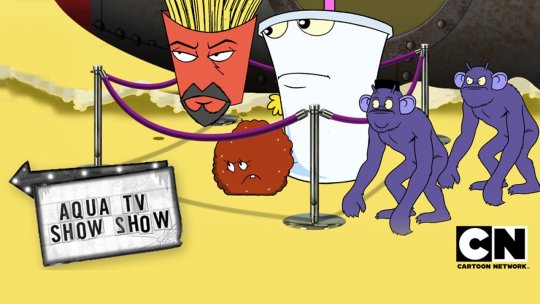


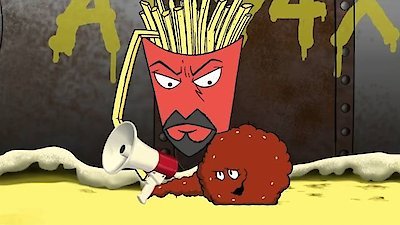


on this day, 10 years ago, the “aqua tv show show” episode, “banana planet”, aired on [adult swim]
this episode has guest appearances by matt besser, lavell crawford, and curtis gwinn, as the “banana planet apes” 🍌🪐🦍
below is some production art from the wonderfully talented athf artist, bob pettitt
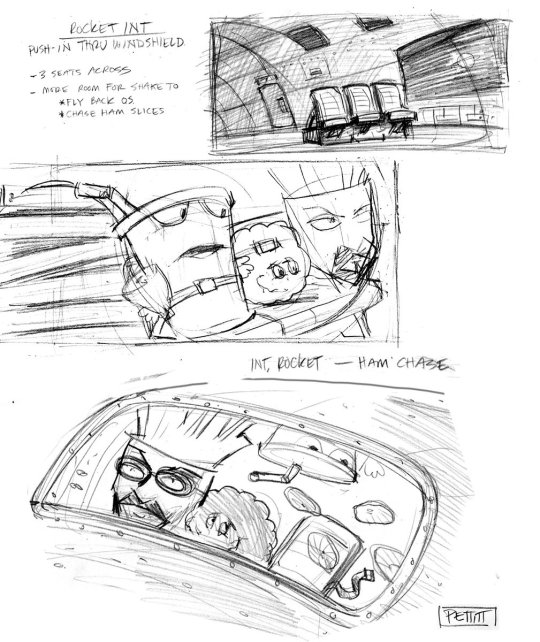

#atvss#aqua tv show show#master shake#meatwad#frylock#banana planet#banana planet ep#banana planet episode#season 10#adult swim#bob pettitt#this is such an underrated episode imho#like it’s not one of my favs-#but it’s watchable#and has some VERY underrated jokes#like the boobless in the calculator-#and shake joining the apes to throw 💩 at the other aqua teens lol#but if you haven’t seen it you should go watch it now :3#ALSO-#credit to the amazing bob pettitt on x for those behind the scenes drawings#he is so talented and super kind so plz go show him some love y’all 🩷
18 notes
·
View notes